Parts
Are All Bike Forks The Same Size?
When it comes to the world of bicycles, enthusiasts and beginners alike often find themselves delving into the complexities of bike components. Among these components, the bike fork plays a pivotal role in determining the performance, comfort, and overall experience of riding. However, the question that frequently arises in the minds of cyclists is, “Are All Bike Forks The Same Size?“
In this comprehensive guide, HookBike will unravel the intricate world of bike forks, exploring their sizes, types, and how they can significantly impact your riding experience. By the end of this article, you will not only understand the importance of choosing the right fork for your bike but also be equipped with the knowledge needed to make an informed decision.
Bike Forks: A Vital Component
Before we delve into the specifics of bike fork sizes, it’s crucial to understand the fundamental role of the bike fork in your cycling experience. The fork is the part of your bicycle that connects the front wheel to the frame. It serves multiple critical functions, including:
- Suspension: Some bike forks come equipped with suspension systems, which are essential for absorbing shocks and providing a smoother ride, especially on rough terrain.
- Steering Control: The fork influences your bike’s steering and handling, impacting how responsive and stable it feels while navigating different terrains.
- Aerodynamics: The design and size of the fork can affect the aerodynamics of your bike, which is particularly important for competitive cyclists seeking maximum speed.
Bike forks are a vital component that greatly affects your bike’s handling and comfort. The choice of fork should align with your riding style, terrain, and budget, as it can significantly impact your overall cycling experience. Proper maintenance is also key to ensuring your fork’s longevity and performance.
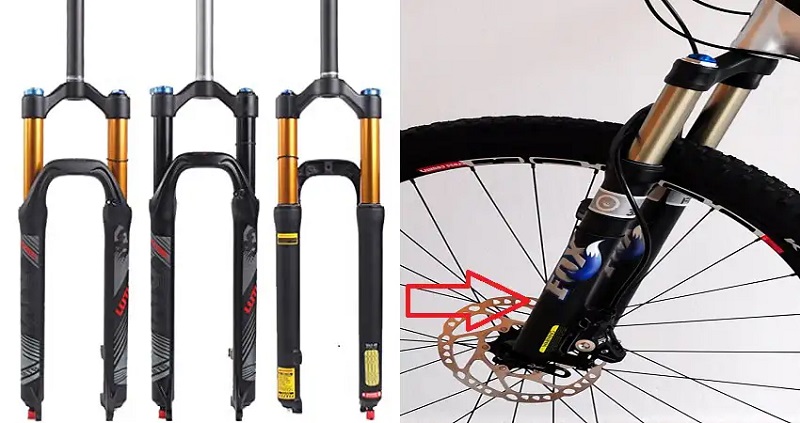
Are All Bike Forks The Same Size?
Now, let’s address the central question: Are all bike forks the same size? The short answer is NO. Bike forks come in a variety of sizes to cater to different types of bikes and riding styles. Understanding these variations is crucial to optimizing your cycling experience.
Wheel Diameter
One of the primary factors influencing bike fork sizes is the wheel diameter. The most common wheel diameters for adult bikes are 26 inches, 27.5 inches, and 29 inches. Each of these wheel sizes requires a corresponding fork size to maintain proper geometry and handling.
- 26-inch Forks: These are commonly found on older mountain bikes and some hybrid models. They offer agility and are well-suited for technical trails.
- 27.5-inch Forks: This size is often referred to as 650b, and it strikes a balance between the nimbleness of 26-inch forks and the stability of 29-inch forks.
- 29-inch Forks: These are prevalent in modern mountain bikes and provide excellent stability and roll-over capabilities, making them ideal for rough terrain.
See more: How a mountain bike fork works?
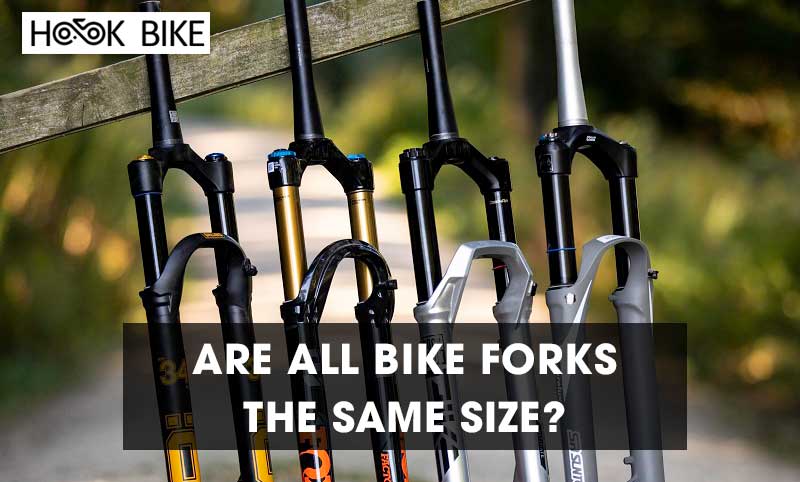
Axle Type
Another aspect to consider when evaluating bike forks is the axle type. There are two primary axle standards:
- Quick Release (QR): This traditional axle type is recognizable by its lever and is widely used on older bikes. QR forks are generally less stiff than thru-axles.
- Thru-Axle: Thru-axles have become the standard for many high-performance bikes due to their increased stiffness, which enhances steering precision and overall control.
Suspension Type
Suspension forks can be categorized into three main types:
- Rigid Forks: These forks have no suspension and are typically found on road bikes and some commuter or city bikes. They prioritize lightweight and efficiency over shock absorption.
- Hardtail Forks: Hardtail forks feature suspension in the front but are rigid in the rear. They are common in cross-country mountain bikes and offer a good compromise between comfort and efficiency.
- Full Suspension Forks: Full suspension forks have both front and rear suspension systems and are often found on downhill and trail mountain bikes. They provide maximum shock absorption but can be heavier.
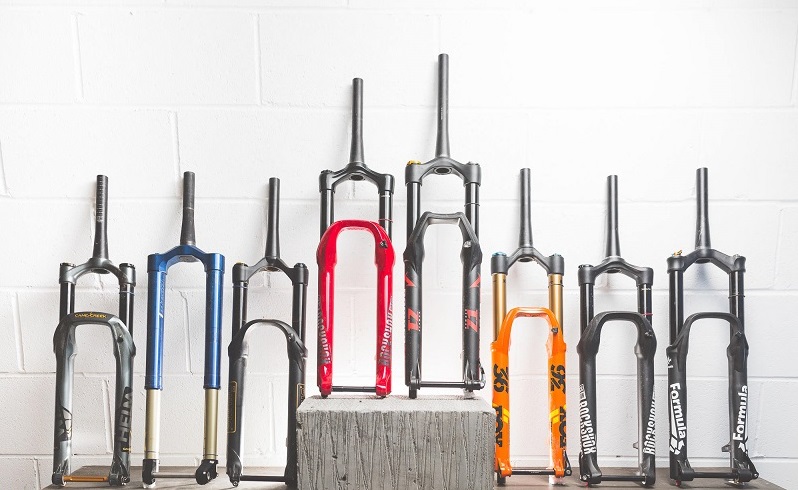
Frame Compatibility
The design and geometry of a bike’s frame play a significant role in determining which fork is compatible. The frame must have the appropriate head tube size, axle spacing, and brake mounts to match the chosen fork.
Brake Type
The type of brakes you plan to use (rim brakes or disc brakes) affects fork compatibility. Forks are designed with specific mounting points for brake calipers, and these need to match your brake choice.
Bike Type
Different types of bikes, such as road bikes, mountain bikes, gravel bikes, and hybrids, require forks with different specifications to meet their specific needs. For example, mountain bike forks are built for rugged off-road use, while road bike forks prioritize lightweight and aerodynamic design.
Material and Features
Forks can be made from various materials like aluminum, carbon fiber, or steel, and may come with different features like suspension, fender mounts, or rack mounts. These factors also affect fork size and design.
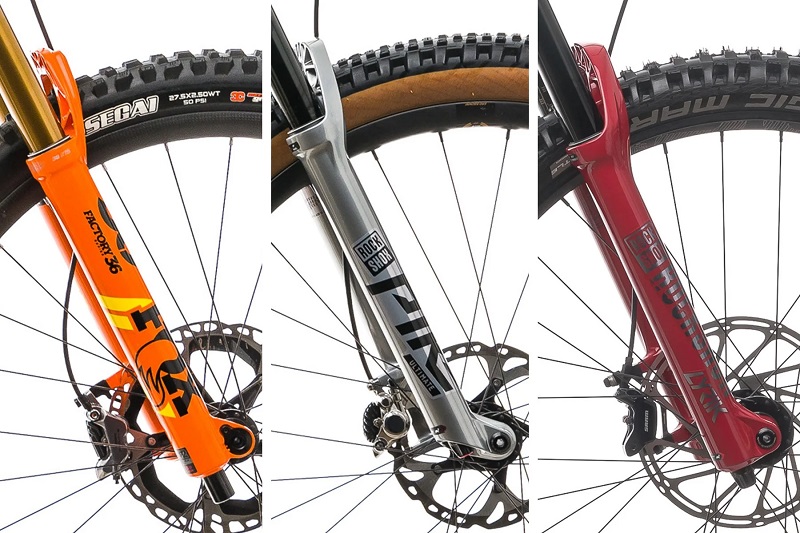
Given the variety of bike fork sizes and specifications, it’s crucial to choose a fork that is compatible with your specific bike frame, wheel size, and intended riding style. When replacing a fork or upgrading your bike’s components, consult with a knowledgeable bike shop or mechanic to ensure you select the right fork for your needs.
Selecting the Right Fork for Your Bike
Selecting the right fork for your bike is an essential decision that can greatly impact your bike’s performance and handling. Here’s a step-by-step guide to help you choose the appropriate fork for your bike:
Determine Your Bike Type
Identify the type of bike you have or plan to build. Common categories include road bikes, mountain bikes, gravel bikes, hybrid bikes, and more specialized categories like cyclocross or touring bikes.
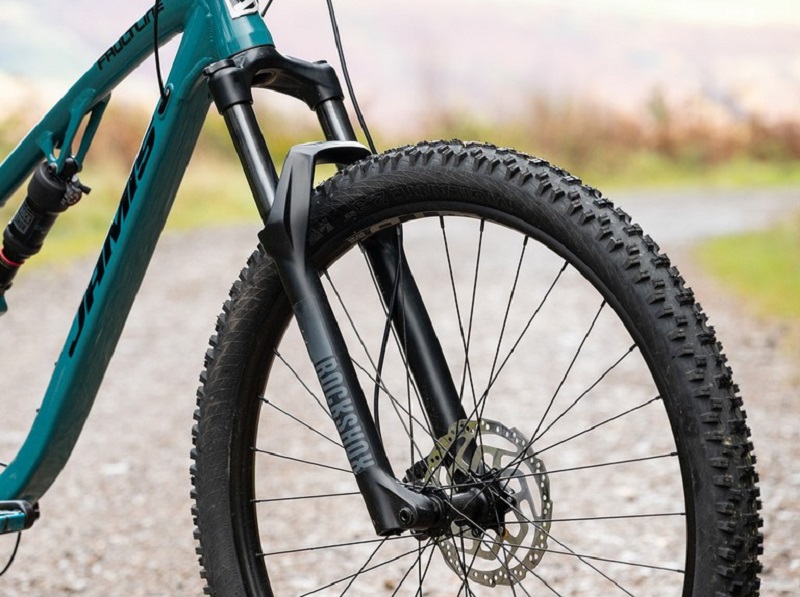
Know Your Wheel Size
Determine the wheel size of your bike, which is typically printed on the tire’s sidewall. Common wheel sizes include 26-inch, 27.5-inch (650b), and 29-inch for mountain bikes, and 700c for road and gravel bikes.
Check Axle Type
Determine the axle type and size your frame is designed for and choose a fork that matches it. Most modern mountain bikes use through-axles, while road and gravel bikes may have quick-release or thru-axles with specific dimensions (e.g., 12mm, 15mm, 20mm).
Verify Steerer Tube Compatibility
Check the steerer tube diameter and type your frame’s headset can accommodate. Common sizes include 1-1/8 inches and 1.5 inches, but tapered steerer tubes are becoming more common.
See more: types of mountain bike forks
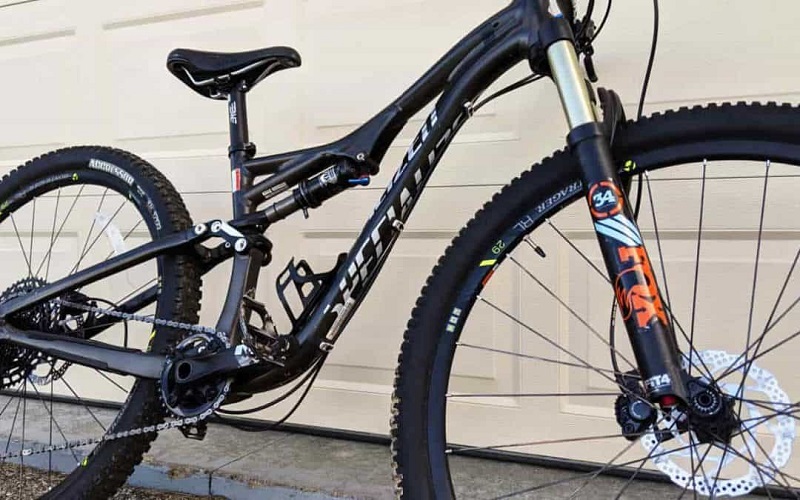
Brake Compatibility
Ensure that the fork you choose is compatible with your preferred brake type (rim brakes or disc brakes). Forks have specific mounting points for brake calipers.
Frame Compatibility
Make sure the fork’s geometry and design are compatible with your bike’s frame. The head tube size, fork rake, and overall geometry should match.
Budget
Determine your budget for a new fork. Forks come in a wide range of price points, and higher-end forks often offer better performance and features.
Seek Expert Advice
If you’re uncertain about any aspect of choosing a fork or if you have specific needs, consult with a knowledgeable bike shop or a professional bike mechanic. They can provide valuable guidance and help you select the right fork for your bike.

That the right fork can significantly improve your riding experience, so take the time to research and choose the one that best suits your needs and preferences.
Conclusion
In conclusion, the answer to the question, “Are All Bike Forks The Same Size?” is a resounding no. Bike forks come in a variety of sizes, each catering to specific wheel diameters, riding styles, and suspension preferences. Choosing the right fork for your bike is crucial for optimal performance, comfort, and safety.
As you embark on your journey to find the perfect bike fork, remember to consider your wheel size, riding style, suspension needs, and axle type. By doing so, you’ll not only enhance your cycling experience but also ensure that your bike’s components work in harmony, delivering the best possible ride.
So, the next time you hit the road or trail, you can confidently say that you’ve chosen the perfect fork to support your cycling adventures.

